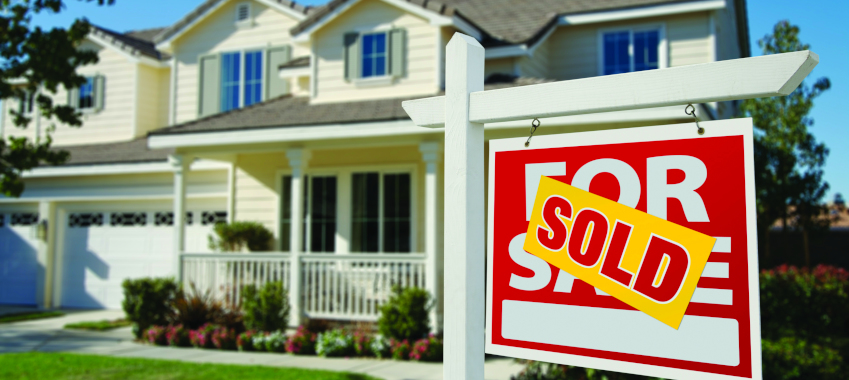
There are signs that the housing market has moved through a peak rate of growth amid a slowdown in demand and rise in stock, even as overall conditions remain strong, CoreLogic has said.
The property research group released its Hedonic Home Value Index, which revealed that housing values lifted by 1.8 per cent in April (according to the national home value index).
CoreLogic noted that the monthly pace of capital gains has eased from a 32-year high in March (2.8 per cent), but said that housing values are still rising at a swift pace, up 6.8 per cent over the past three months to be 10.2 per cent higher than in September last year, during the “COVID low”.
Nationally, as at 30 April, house prices rose 6.8 per cent over the quarter and 7.8 per cent annually.
CoreLogic said that despite the April slowdown, every capital city and “rest-of-state” region have continued to record a rise in dwelling values over the month.
While Darwin (2.7 per cent) and Sydney (2.4 per cent) recorded the largest month-on-month rise in dwelling values, Perth recorded the lowest rate of growth among the capital cities at 0.8 per cent.
The four smallest capital cities recorded double-digit annual growth, with prices growing by 10.3 per cent in Adelaide, 13.8 per cent in Hobart, 15.3 per cent in Darwin, and 14.2 per cent in Canberra.
CoreLogic attributed this to less COVID-related disruption in these cities and an earlier start to the growth phase last year.
Melbourne recorded the lowest annual growth of 2.2 per cent due to a larger downturn driven by extended lockdown periods in 2020 to curtail the spread of the coronavirus.
Houses continued to outperform units in April, as higher-density style of housing experiencing less demand despite a larger supply across some inner-city precincts, CoreLogic said.
House values have risen by 8.6 per cent at the combined capital city level, which is double the pace of unit values (4.3 per cent) over the first four months of the year.
Commenting on this trend, CoreLogic research director Tim Lawless said: “A preference shift away from higher-density housing during a global pandemic is understandable. However, a rise in flexible working arrangements also seems to be supporting greater demand for houses around the outer fringes of capital cities.
“Relatively weak investor activity, compounded by a supply overhang in some high-rise precincts, is also dampening price growth in unit markets.”
The number of new property listings added to the market are well above average, but strong buyer demand has kept overall advertised stock levels low, CoreLogic said in its analysis.
Mr Lawless said that the rise in new listings demonstrates increased vendor confidence.
He also said total advertised stock levels were 25 per cent below the five-year average in late April.
“Such low total listing numbers, at a time when new listings are above average, reflects the strength of buyer demand, fuelling the current rapid rate of absorption,” he said.
Commenting on housing market conditions, Mr Lawless said that overall, conditions remain strong but added that there are signs that the housing market has “moved through a peak rate of growth”.
“The slowdown in housing value appreciation is unsurprising given the rapid rate of growth seen over the past six months, especially in the context of subdued wages growth. With housing prices rising faster than incomes, it’s likely price sensitive sectors of the market, such as first home buyers and lower income households, are finding it harder to save for a deposit and transactional costs.
“Growth conditions over the past six months have been unsustainable and are now succumbing to a gradual slowdown in demand due to worsening affordability constraints, a rise in fresh inventory, higher levels of new detached housing supply and less government stimulus,” Mr Lawless said.
“We are expecting housing values will continue to rise throughout 2021 and into 2022 albeit at a gradually slower pace. Demand should be supported by an expectation that mortgage rates will remain at their record lows for an extended period of time, as well as ongoing high levels of consumer confidence as the economy expands at a faster than average pace.”
Mr Lawless concluded by stating that the possibility of tighter credit policies remains a key risk to the housing market outlook but noted that both the Reserve Bank of Australia (RBA) and the Australian Prudential Regulation Authority (APRA) have noted that there has been little evidence of a deterioration of lending standards to date.
“A rise in the proportion of riskier types of lending or higher risk loans could be met with a new round of credit policies,” he said.
“We know from earlier periods of macro-prudential intervention that this would likely dampen market activity and the pace of capital gains.”
Find out more about the top property and home buying trends in your local area at the Better Business Summit 2021. Places are limited so make sure you secure your place at the five-state event asap!
 Login
Login








JOIN THE DISCUSSION